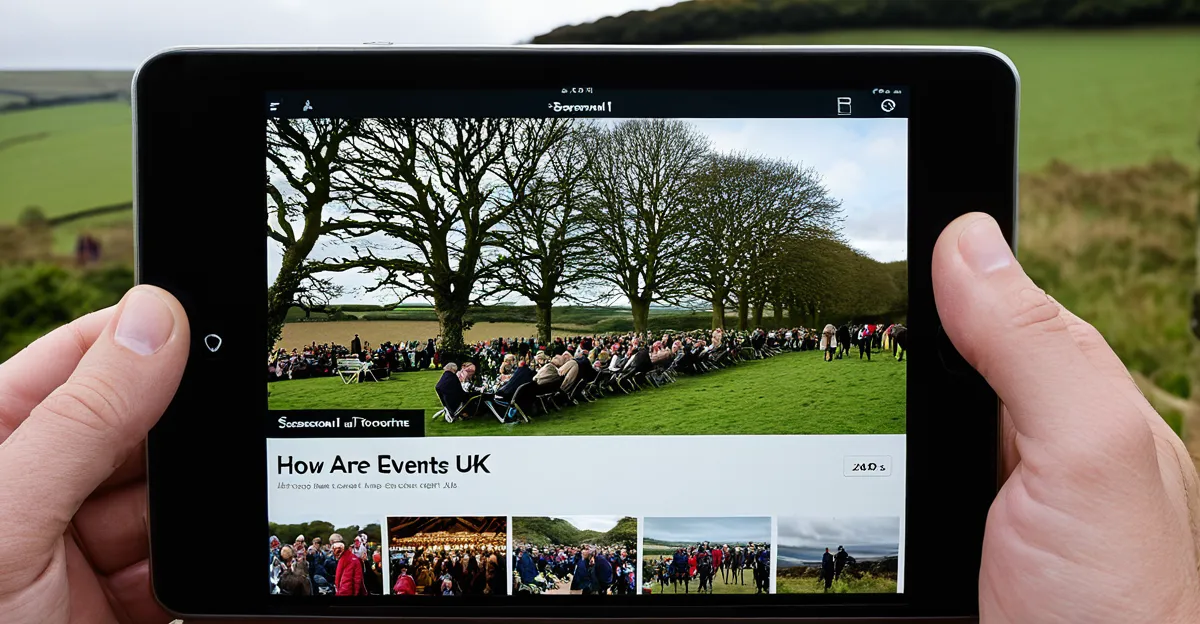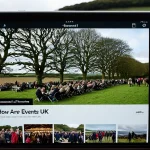The Impact of Seasonal Events on UK Tourism Trends
Seasonal events play a significant role in shaping UK tourism trends, directly influencing fluctuations in tourist numbers throughout the year. Events such as festivals, cultural celebrations, and public holidays draw visitors both domestically and internationally, often creating noticeable spikes during these periods.
Major events act as focal points in the UK tourism calendar, setting patterns for when tourists choose to visit. For instance, summer festivals and Christmas markets attract large crowds, elevating visitor numbers considerably. These occasions not only boost economic activity but also contribute to a dynamic and diverse tourism landscape.
In the same genre : How Will New Tourism Policies Impact Cultural Experiences in the UK?
Comparing tourist numbers during peak and off-peak seasons reveals distinct shifts. Peak periods tend to see higher accommodation bookings and increased footfall at popular sites, while off-peak times provide quieter experiences but fewer visitors overall. Understanding the impact of these seasonal events helps businesses and policymakers anticipate demand and tailor services to optimize the UK’s tourism potential year-round.
Types of Seasonal Events Affecting UK Tourist Numbers
Seasonal events significantly shape the flow of tourists across the UK. UK festivals, such as music festivals like Glastonbury and cultural celebrations like the Edinburgh Festival Fringe, attract large crowds. These events create spikes in tourism, especially in cities that host them annually. Sporting events, including Wimbledon and the Premier League matches, also play a major role in driving visitor numbers.
Also read : What Are the Unique Attractions in the UK You Haven’t Heard About?
National holidays, including public celebrations like St. George’s Day or bank holidays, offer periods where domestic tourism surges. During these times, families and groups often travel to experience local festivals or natural attractions. Geographic hotspots for event-driven tourism include London, Edinburgh, and Liverpool, where cultural and sporting events frequently coincide with peak visitor periods.
International and domestic visitors respond differently to these events. International tourists often plan trips around iconic festivals or tournaments, while domestic tourists may attend smaller local events or take advantage of extended holiday weekends. This dynamic impacts accommodation demand and transport services, underscoring the importance of understanding event types in predicting tourism trends.
Examples and Analysis of Major Events Drawing Tourists
Major events in the UK play a pivotal role in attracting tourists, boosting local economies and enhancing cultural appeal. For instance, the Glastonbury Festival is a signature UK major event, attracting over 200,000 visitors annually. It not only showcases world-class music but significantly drives tourism in Somerset, generating millions in revenue. Similarly, Wimbledon, a globally renowned tennis event, draws hundreds of thousands of spectators, with visitor statistics revealing a substantial international audience that boosts London’s hospitality sector.
The Edinburgh Fringe Festival provides a compelling tourism case study by transforming the city each August into a vibrant hub of culture and performance. Its visitor statistics indicate over 3 million attendances during the three-week period, making it one of the largest arts festivals worldwide. Additionally, Christmas markets across the UK, particularly in cities like Manchester and Bath, attract tourism during the festive winter months, contributing substantially to local businesses. These UK major events demonstrate how diverse types of gatherings—from sports to cultural festivals—generate significant tourist influxes and economic benefits, underlining the importance of event-based tourism in the UK’s overall travel landscape.
Factors Behind Seasonal Fluctuations in UK Tourism
Seasonal fluctuations in UK tourism arise from several intertwined factors, notably tourism seasonality, visitor behaviour, and travel motivations UK. Weather patterns play a crucial role; milder months tend to attract more tourists, while colder, wetter seasons see a decline. Families often plan trips around school holidays, intensifying peaks during summer and festive periods.
Event marketing also significantly impacts visitor numbers. High-profile festivals or sporting events boost international awareness and encourage travel during specific times, directly influencing travel motivations UK. These events create demand by offering unique experiences that appeal to both domestic and foreign tourists.
Accommodation pricing and availability further shape tourism seasonality. Peak seasons generally come with higher prices and limited availability, deterring budget-conscious travellers or those with flexible schedules. Conversely, off-peak periods may offer attractive deals, but fewer activities and amenities might reduce appeal.
Understanding these elements helps clarify why visitor behaviour shifts throughout the year, reinforcing the cyclical nature of tourism seasonality in the UK. Recognising this dynamic enables stakeholders to tailor marketing and planning strategies effectively.
Comparing Peak vs. Off-Peak Tourism Periods
Understanding the dynamics of peak tourism UK and off-peak travel is crucial for both visitors and destinations. Peak periods often coincide with school holidays, festivals, and major events. During these times, visitor numbers increase significantly, resulting in crowded attractions and higher prices. Official data indicates that popular cities like London and Edinburgh can see visitor numbers rise by over 50% compared to off-peak months.
In contrast, off-peak travel offers quieter experiences with fewer tourists and more competitive rates. Many destinations actively encourage visits during these periods to balance the flow of tourists year-round. Tourism boards have introduced incentives such as discounted accommodation and special events outside peak times to attract visitors.
Statistical trends from the UK’s leading tourism bodies show that off-peak months experience a decline in international arrivals, but domestic travel remains steady. This shift helps sustain local economies even when the usual influx decreases.
By comparing visitor numbers during peak tourism UK periods and off-peak travel times, it’s clear that strategic planning can optimize experiences and economic benefits for all parties involved.
Insights into Future Trends in Seasonal Event Tourism
Seasonal event tourism is evolving rapidly, with future tourism trends shaped by emerging UK events and innovative initiatives. Current data indicates a growing preference for events that blend cultural heritage with modern experiences, suggesting that festivals combining tradition and technology will dominate visitor interests. The rise of eco-friendly and immersive events is another important trend, reflecting increasing demand for sustainable tourism options.
Tourism forecasts predict that emerging UK events such as localized music festivals and bespoke art exhibitions will attract niche audiences, fostering regional development. Crucially, recurring events often build strong brand recognition and sustained visitor loyalty, unlike one-off events which, while impactful, may lack lasting influence.
Stakeholders like hoteliers emphasize the importance of aligning accommodation capacities with anticipated crowd sizes, while local governments prioritize infrastructure that supports both large festivals and community well-being. Tourism agencies focus on leveraging digital marketing and streamlined booking systems to enhance visitor experiences. Understanding these perspectives helps anticipate how seasonal event tourism will evolve, ensuring the sector remains resilient and responsive to dynamic visitor preferences.


